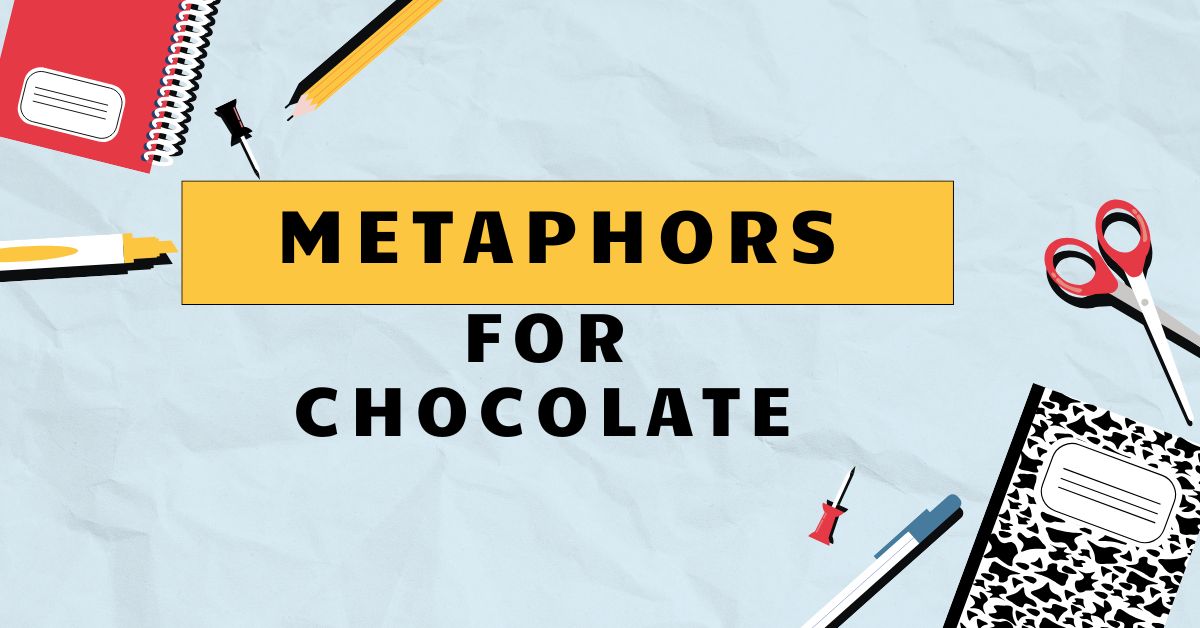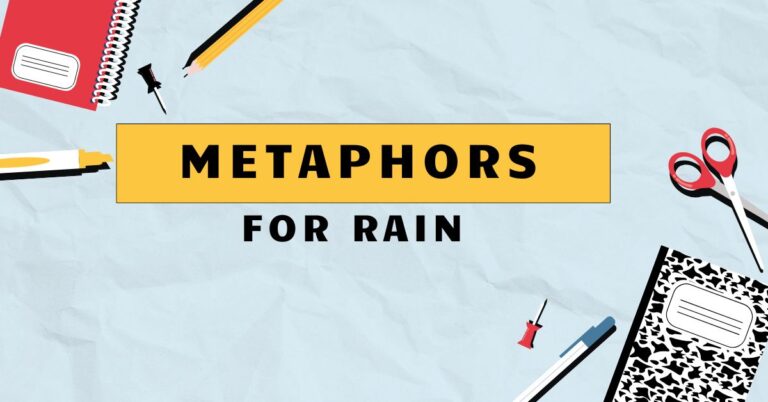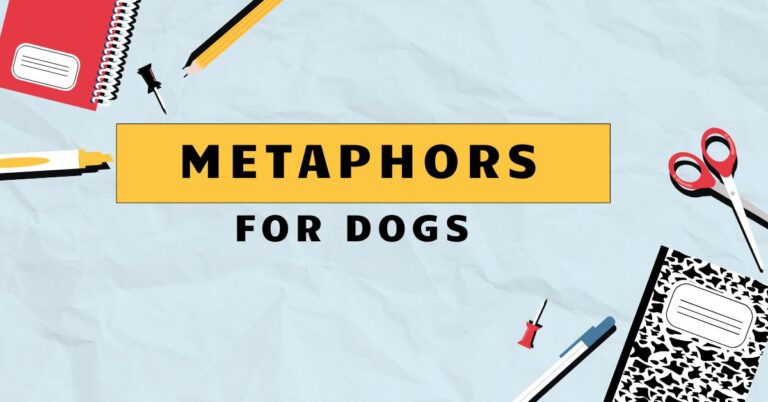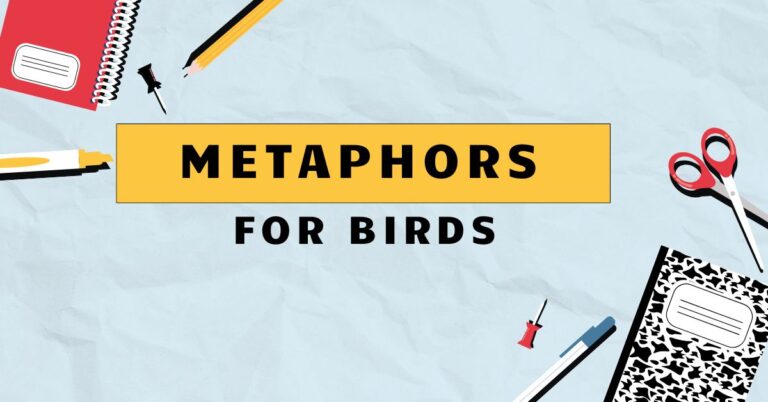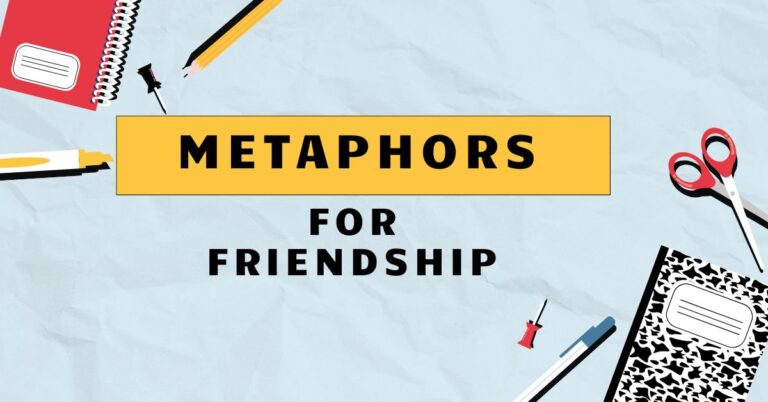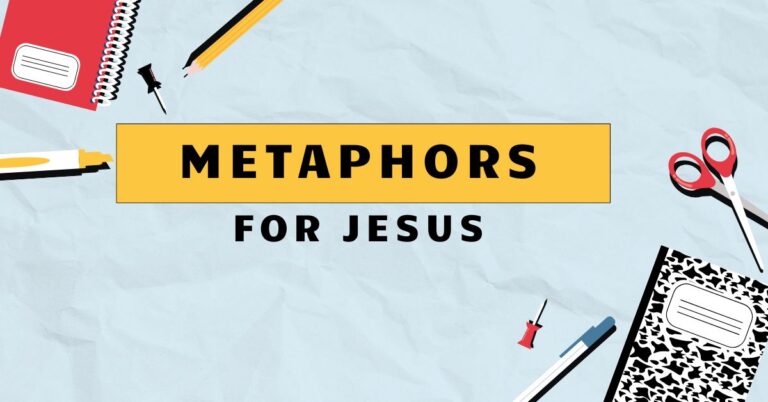41 Chocolate Metaphors: A Delicious Dive into Figurative Language
Metaphors are powerful tools in the English language, allowing us to express complex ideas and emotions by comparing them to something else. Understanding metaphors enhances both our comprehension and creativity.
This article explores the use of metaphors through the lens of chocolate, a universally loved and richly evocative subject. From describing personality traits to illustrating abstract concepts, chocolate metaphors add depth and flavor to our communication.
This guide is perfect for English language learners, writers, and anyone interested in exploring the art of figurative language.
Table of Contents
- Introduction
- Definition of Metaphor
- Structural Breakdown of a Metaphor
- Types of Metaphors
- Examples of Chocolate Metaphors
- Usage Rules for Metaphors
- Common Mistakes with Metaphors
- Practice Exercises
- Advanced Topics in Metaphor Usage
- Frequently Asked Questions
- Conclusion
Definition of Metaphor
A metaphor is a figure of speech that directly compares two unlike things without using “like” or “as.” It asserts that one thingisanother, creating a vivid and often surprising connection. Metaphors are essential for adding depth, color, and nuance to language.
They allow speakers and writers to convey complex ideas in a more relatable and engaging way.
Classification
Metaphors can be classified based on their explicitness and complexity. Some are straightforward and easily understood, while others are more subtle and require deeper analysis.
The effectiveness of a metaphor depends on the audience and the context in which it is used.
Function
The primary function of a metaphor is to create a new understanding by linking two disparate concepts. This linkage can illuminate hidden qualities or provide a fresh perspective.
Metaphors also serve to make abstract ideas more concrete and accessible.
Contexts
Metaphors are used in a wide variety of contexts, from everyday conversation to literature, poetry, and even scientific discourse. Their versatility makes them an indispensable tool for communication and creative expression.
Understanding the context is crucial for interpreting the intended meaning of a metaphor.
Structural Breakdown of a Metaphor
A metaphor consists of two main elements: thetenorand thevehicle. The tenor is the subject being described, while the vehicle is the object or concept used to describe it.
The vehicle carries the metaphorical meaning and transfers its attributes to the tenor. For example, in the metaphor “He is a chocolate fountain of generosity,” “He” is the tenor, and “chocolate fountain” is the vehicle.
The qualities of abundance and richness associated with a chocolate fountain are transferred to the person being described, suggesting that he is exceptionally generous.
Types of Metaphors
Metaphors come in several forms, each with its own unique characteristics and uses. Understanding these different types can help you to identify and use metaphors more effectively.
Implicit Metaphor
An implicit metaphor implies the comparison without explicitly stating it. The tenor is not directly mentioned, but it is suggested through the vehicle.
For example, instead of saying “He roared with anger,” you might say “A storm brewed in his eyes,” implying anger without directly naming it. This type of metaphor requires the reader to infer the connection.
Explicit Metaphor
An explicit metaphor directly states the comparison between the tenor and the vehicle. This is the most common type of metaphor and is often easily recognizable.
An example would be: “Life is a box of chocolates, you never know what you’re going to get.”
Extended Metaphor
An extended metaphor is a metaphor that is developed over several lines or even throughout an entire work. It allows for a more detailed and nuanced comparison.
For example, a poem might use the metaphor of a journey to represent life, elaborating on different stages and challenges along the way.
Mixed Metaphor
A mixed metaphor combines two or more inconsistent metaphors in a single expression, often resulting in a humorous or nonsensical effect. For example, “Let’s nip it in the bud and iron out the wrinkles” combines two unrelated metaphors (stopping something early and resolving problems) and can be confusing or unintentionally funny.
Examples of Chocolate Metaphors
Chocolate, with its rich flavors and diverse forms, provides a wealth of possibilities for metaphorical expression. Here are some examples of how chocolate can be used to describe various aspects of life.
Describing Personality
Chocolate metaphors can be used to describe different personality traits, highlighting their sweetness, bitterness, or complexity. The type of chocolate chosen can reflect the specific characteristic being emphasized.
The following table presents examples of using chocolate metaphors to describe personality traits. Each example includes the metaphor and an explanation of the meaning.
| Metaphor | Explanation |
|---|---|
| “She’s a milk chocolate kind of person – sweet and comforting.” | Describes someone who is gentle, kind, and easy to be around. |
| “He’s a dark chocolate soul – intense and complex.” | Describes someone who is deep, thoughtful, and perhaps a bit mysterious. |
| “Her laughter is like a chocolate truffle – rich and indulgent.” | Describes laughter that is delightful and satisfying. |
| “He has a bittersweet chocolate personality – a mix of joy and sorrow.” | Describes someone who has experienced both happiness and sadness in life. |
| “She’s a white chocolate heart – pure and innocent.” | Describes someone who is naive, honest, and good-natured. |
| “He’s a spicy chili chocolate – unexpectedly bold and adventurous.” | Describes someone who is daring, unconventional, and full of surprises. |
| “She’s like a chocolate lava cake – warm and gooey on the inside.” | Describes someone who may appear reserved but is very affectionate and loving. |
| “He’s a chocolate-covered pretzel – a mix of sweet and salty.” | Describes someone who has contrasting personality traits that complement each other. |
| “She’s a gourmet chocolate bar – sophisticated and refined.” | Describes someone who is elegant, cultured, and has excellent taste. |
| “He’s a hot chocolate on a cold day – comforting and warm.” | Describes someone who provides solace and reassurance in difficult times. |
| “She’s a chocolate swirl ice cream – unpredictable and fun.” | Describes someone who is spontaneous, lively, and enjoyable to be with. |
| “He’s a sugar-free chocolate – disappointing and lacking.” | Describes someone who is dull, uninteresting, and fails to meet expectations. |
| “She’s a chocolate bunny – cute and harmless.” | Describes someone who is charming, innocent, and poses no threat. |
| “He’s a chocolate pudding – simple and satisfying.” | Describes someone who is uncomplicated, reliable, and provides contentment. |
| “She’s a chocolate mousse – light and airy but decadent.” | Describes someone who is seemingly carefree but possesses hidden depths. |
| “He’s a chocolate diamond – rare and precious.” | Describes someone who is unique, valuable, and highly cherished. |
| “She’s a chocolate fountain of joy – endlessly giving and cheerful.” | Describes someone who radiates happiness and generously shares it with others. |
| “He’s a chocolate chip cookie – universally loved and appreciated.” | Describes someone who is widely liked, well-regarded, and brings happiness to many. |
| “She’s a chocolate éclair – seemingly delicate but full of surprises.” | Describes someone who appears fragile but possesses hidden strength and complexity. |
| “He’s a chocolate log – dense, earthy, and grounded.” | Describes someone who is reliable, practical, and firmly rooted in reality. |
| “She’s a chocolate kiss – a small gesture of affection.” | Describes someone who shows love and care through small, thoughtful actions. |
| “He’s a chocolate bar with nuts – a little quirky and unpredictable.” | Describes someone who is slightly eccentric, interesting, and not entirely conventional. |
| “She’s a chocolate milkshake – a comforting blend of sweetness.” | Describes someone who is soothing, agreeable, and creates a sense of harmony. |
Illustrating Emotions
Chocolate metaphors can effectively convey a range of emotions, from joy and comfort to sadness and bitterness. The sensory associations with chocolate make these metaphors particularly evocative.
The following table demonstrates how chocolate metaphors can be used to illustrate various emotions, providing both the metaphor and a detailed explanation.
| Metaphor | Explanation |
|---|---|
| “Her happiness was a chocolate rush – intense and immediate.” | Describes a feeling of sudden and overwhelming joy. |
| “Sadness washed over him like melted chocolate – smooth and enveloping.” | Describes a feeling of sorrow that is all-consuming and comforting in its familiarity. |
| “Anger left a bitter chocolate taste in his mouth – unpleasant and lingering.” | Describes a feeling of resentment that persists long after the initial event. |
| “Love felt like a rich chocolate ganache – decadent and satisfying.” | Describes a feeling of deep, fulfilling love. |
| “Anxiety was a hard chocolate shell around her heart – protective but isolating.” | Describes a feeling of fear and worry that creates a barrier between oneself and others. |
| “Hope was a sweet chocolate surprise – unexpected and delightful.” | Describes a feeling of optimism that brings joy and anticipation. |
| “Grief was a dark chocolate abyss – deep and unending.” | Describes a feeling of profound sorrow that seems impossible to overcome. |
| “Excitement bubbled like a chocolate fountain – overflowing and infectious.” | Describes a feeling of enthusiasm that is shared with others. |
| “Disappointment was a stale chocolate – lacking flavor and freshness.” | Describes a feeling of letdown that is unfulfilling and unpleasant. |
| “Contentment was a warm chocolate drink on a cold night – comforting and peaceful.” | Describes a feeling of satisfaction and tranquility. |
| “Jealousy was a bitter chocolate coating – masking sweetness with resentment.” | Describes a feeling of envy that taints positive emotions. |
| “Fear tasted like cheap chocolate – artificial and unsettling.” | Describes a feeling of unease that is superficial and disturbing. |
| “Remorse was a melted chocolate mess – sticky and difficult to clean up.” | Describes a feeling of regret that is hard to resolve. |
| “Longing was a craving for chocolate – a persistent and comforting desire.” | Describes a feeling of wanting something familiar and pleasurable. |
| “Apathy felt like flavorless chocolate – indifferent and uninspiring.” | Describes a lack of interest or enthusiasm. |
| “Nostalgia was a vintage chocolate box – filled with sweet memories.” | Describes a sentimental longing for the past. |
| “Frustration was a broken chocolate bar – fragmented and unsatisfying.” | Describes a feeling of being thwarted or prevented from achieving a goal. |
| “Relief was a creamy chocolate filling – soothing and rewarding.” | Describes a feeling of comfort after stress or worry. |
| “Embarrassment was a melted chocolate stain – awkward and hard to hide.” | Describes a feeling of shame that is difficult to conceal. |
| “Hopefulness was a chocolate seedling – small but full of potential.” | Describes a feeling of optimism about the future. |
| “Bitterness coated her words like dark chocolate – sharp and lingering.” | Describes how negative emotions can affect communication, leaving a lasting impression. |
| “Joyful moments were like chocolate sprinkles – adding color to everyday life.” | Describes how small bursts of happiness can enhance ordinary experiences. |
| “Guilt was like a chocolate hangover – heavy and difficult to shake off.” | Describes the lingering discomfort and regret following a wrong action. |
Representing Experiences
Chocolate can be used metaphorically to represent different types of experiences, highlighting their sweetness, intensity, or overall impact.
The table below offers examples of how chocolate metaphors can represent various experiences, each accompanied by a detailed explanation.
| Metaphor | Explanation |
|---|---|
| “The vacation was a chocolate indulgence – a pure and decadent treat.” | Describes a luxurious and enjoyable experience. |
| “Life with him was a box of assorted chocolates – full of surprises.” | Describes a relationship or experience that is unpredictable and varied. |
| “The challenge was a tough chocolate shell to crack – difficult but rewarding.” | Describes a task that is challenging but ultimately worthwhile. |
| “Success tasted like sweet chocolate victory – satisfying and well-deserved.” | Describes the pleasure and satisfaction of achieving a goal. |
| “The loss was a bitter chocolate pill to swallow – unpleasant but necessary.” | Describes a difficult situation that must be accepted. |
| “The party was a chocolate extravaganza – an over-the-top celebration.” | Describes an event that is lavish and excessive. |
| “The journey was a chocolate river – flowing and unpredictable.” | Describes a life path or experience that is constantly changing. |
| “The concert was a chocolate symphony – a harmonious and delightful experience.” | Describes an event that is pleasing and well-coordinated. |
| “The meeting was a flavorless chocolate substitute – unsatisfying and dull.” | Describes an event that is uninteresting and unproductive. |
| “The performance was a chocolate masterpiece – expertly crafted and beautiful.” | Describes an event that is skillfully executed and impressive. |
| “The project was a chocolate puzzle – complex and challenging to complete.” | Describes a task that requires careful thought and effort. |
| “The lecture was a chocolate snooze-fest – boring and monotonous.” | Describes an event that is tedious and unengaging. |
| “The date was a chocolate dream – perfect and unforgettable.” | Describes an experience that is idealized and memorable. |
| “The competition was a chocolate showdown – intense and competitive.” | Describes an event that is highly contested. |
| “The lesson was a chocolate revelation – eye-opening and enlightening.” | Describes an experience that provides new understanding. |
Comparing Relationships
Relationships can be described using chocolate metaphors to convey their sweetness, complexity, or level of compatibility.
Below are several examples of how chocolate metaphors can be used to compare relationships, along with detailed explanations.
| Metaphor | Explanation |
|---|---|
| “Their relationship is like a chocolate fondue – warm, communal, and enjoyable.” | Describes a relationship that is comforting, shared, and pleasurable. |
| “Their love is a dark chocolate romance – intense, passionate, and complex.” | Describes a relationship that is deep, emotional, and perhaps challenging. |
| “Their friendship is a milk chocolate bond – sweet, reliable, and comforting.” | Describes a relationship that is gentle, dependable, and supportive. |
| “Their partnership is a chocolate and peanut butter pairing – perfectly complementary.” | Describes a relationship where each person’s strengths enhance the other’s. |
| “Their connection is a white chocolate fantasy – pure, innocent, and perhaps unrealistic.” | Describes a relationship that is idealized and perhaps naive. |
Abstract Concepts
Even abstract concepts can be made more understandable and relatable through the use of chocolate metaphors.
The following table illustrates the use of chocolate metaphors in describing abstract concepts, providing the metaphor and its meaning.
| Metaphor | Explanation |
|---|---|
| “Time is like a melting chocolate bar – slipping away quickly.” | Describes the fleeting nature of time. |
| “Knowledge is a rich chocolate cake – layered and satisfying.” | Describes the depth and fulfillment of learning. |
| “Memory is a chocolate box of moments – some sweet, some bitter.” | Describes the collection of experiences that make up our past. |
| “Opportunity is a chocolate coin – valuable but easily spent.” | Describes the potential that must be seized quickly. |
| “Creativity is a chocolate swirl – unique and unpredictable.” | Describes the innovative and original nature of imagination. |
Usage Rules for Metaphors
Using metaphors effectively requires careful consideration of several factors. A poorly chosen metaphor can confuse or detract from your message.
Here are some guidelines to follow:
Clarity and Relevance
Ensure that the connection between the tenor and the vehicle is clear and relevant. The metaphor should enhance understanding, not obscure it.
Choose vehicles that your audience will easily recognize and understand.
Appropriateness
Consider the tone and context of your communication. A lighthearted metaphor might be inappropriate in a serious discussion.
Choose metaphors that align with the overall message and purpose.
Originality
While common metaphors can be effective, strive for originality to make your language more engaging and memorable. A fresh and unexpected metaphor can capture your audience’s attention and create a lasting impression.
Consistency
Avoid mixing metaphors that create conflicting images or meanings. Maintain a consistent tone and theme throughout your use of metaphors.
A mixed metaphor can confuse the audience and undermine your credibility.
Common Mistakes with Metaphors
Several common mistakes can detract from the effectiveness of metaphors. Being aware of these pitfalls can help you avoid them in your own writing and speaking.
Mixed Metaphors: Combining two or more inconsistent metaphors.
- Incorrect: “We need to nip it in the bud and get the ball rolling.”
- Correct: “We need to nip it in the bud to prevent further problems.”
Clichéd Metaphors: Using overused and predictable metaphors.
- Incorrect: “Life is a highway.”
- Correct: “Life is a winding path, full of unexpected turns.”
Unclear Metaphors: Using metaphors that are difficult to understand or interpret.
- Incorrect: “His argument was a chocolate cloud.”
- Correct: “His argument was a dense chocolate cake, rich in detail but difficult to digest.”
Inappropriate Tone: Using metaphors that clash with the overall tone of the communication.
- Incorrect: During a somber eulogy, “His life was a chocolate party.”
- Correct: During a somber eulogy, “His memory is a bittersweet chocolate, a reminder of joy and sorrow.”
Practice Exercises
Test your understanding of chocolate metaphors with these practice exercises.
Exercise 1: Identifying Metaphors
Identify the metaphors in the following sentences and explain their meaning.
| Question | Answer |
|---|---|
| 1. Her voice was a smooth chocolate melody. | Metaphor: “smooth chocolate melody.” Meaning: Her voice was pleasant and soothing. |
| 2. His anger was a bitter chocolate storm. | Metaphor: “bitter chocolate storm.” Meaning: His anger was intense and unpleasant. |
| 3. The city was a chocolate jungle of temptations. | Metaphor: “chocolate jungle.” Meaning: The city was filled with enticing opportunities. |
| 4. Their love was a sweet chocolate dream. | Metaphor: “sweet chocolate dream.” Meaning: Their love was perfect and delightful. |
| 5. Education is a rich chocolate foundation. | Metaphor: “rich chocolate foundation.” Meaning: Education provides a strong and valuable base. |
| 6. The challenge was a tough chocolate shell to crack. | Metaphor: “tough chocolate shell.” Meaning: The challenge was difficult to overcome. |
| 7. Her smile was a warm chocolate invitation. | Metaphor: “warm chocolate invitation.” Meaning: Her smile was welcoming and inviting. |
| 8. His words were a dark chocolate warning. | Metaphor: “dark chocolate warning.” Meaning: His words carried a serious and foreboding message. |
| 9. The experience was a chocolate rollercoaster of emotions. | Metaphor: “chocolate rollercoaster.” Meaning: The experience was filled with ups and downs. |
| 10. Life is a box of chocolates. | Metaphor: “box of chocolates.” Meaning: Life is full of surprises. |
Exercise 2: Creating Metaphors
Create a chocolate metaphor for each of the following concepts.
| Concept | Your Metaphor |
|---|---|
| 1. Fear | Fear is a cheap chocolate imitation – unsatisfying and artificial. |
| 2. Joy | Joy is a chocolate explosion – bursting with sweetness. |
| 3. Success | Success is a well-earned chocolate reward. |
| 4. Failure | Failure is a melted chocolate mess – disappointing and sticky. |
| 5. Hope | Hope is a small chocolate seed – full of potential. |
| 6. Regret | Regret is a bitter chocolate aftertaste. |
| 7. Courage | Courage is a spicy chili chocolate – unexpectedly bold. |
| 8. Wisdom | Wisdom is a vintage chocolate recipe – tried and true. |
| 9. Patience | Patience is allowing chocolate to slowly melt in your mouth – savoring the experience. |
| 10. Opportunity | Opportunity is a limited-edition chocolate – rare and valuable. |
Exercise 3: Analyzing Metaphors
Analyze the following chocolate metaphors and explain their effectiveness.
| Metaphor | Analysis |
|---|---|
| 1. “Her kindness was a chocolate waterfall, cascading over everyone.” | Effective: The metaphor creates a vivid image of abundance and generosity, emphasizing the extent of her kindness. |
| 2. “His lies were a cheap chocolate coating, hiding the truth underneath.” | Effective: The metaphor suggests that his lies are superficial and deceptive, masking a more unpleasant reality. |
| 3. “The challenge was a chocolate mountain to climb, but the view from the top was worth it.” | Effective: The metaphor conveys the difficulty of the challenge, but also highlights the rewarding outcome. |
| 4. “Their marriage was a chocolate soufflé, delicate and requiring careful attention.” | Effective: The metaphor emphasizes the fragility and the need for constant care in their relationship. |
| 5. “The project was a chocolate sculpture, intricate and time-consuming.” | Effective: The metaphor highlights the complexity and dedication required for the project. |
Advanced Topics in Metaphor Usage
For advanced learners, understanding the theoretical underpinnings and broader applications of metaphors can further enhance their linguistic skills.
Cognitive Metaphor Theory
Cognitive Metaphor Theory proposes that metaphors are not merely linguistic devices, but fundamental structures of thought. This theory suggests that we understand abstract concepts by mapping them onto more concrete experiences.
Metaphor in Literature
Metaphors play a crucial role in literature, adding layers of meaning and enhancing the reader’s experience. Authors use metaphors to create imagery, convey emotions, and develop themes.
Metaphor in Rhetoric
In rhetoric, metaphors are used to persuade and influence audiences. Effective metaphors can make arguments more compelling and memorable.
Politicians and public speakers often use metaphors to connect with their audience and convey their message in a more impactful way.
Frequently Asked Questions
Here are some frequently asked questions about metaphors:
- What is the difference between a metaphor and a simile?
A metaphor directly compares two things by stating that one is the other, while a simile uses “like” or “as” to make a comparison. For example, “He is a lion” is a metaphor, while “He is brave as a lion” is a simile.
- How can I improve my use of metaphors?
Practice identifying and analyzing metaphors in literature and everyday conversation. Experiment with creating your own metaphors, and seek feedback from others.
- Why are metaphors important in communication?
Metaphors add depth, color, and nuance to language. They help to make abstract ideas more concrete and engaging, and they can enhance understanding and create emotional connections.
- What is a dead metaphor?
A dead metaphor is a metaphor that has become so common that it is no longer recognized as a figure of speech. Examples include “the leg of a table” or “the heart of the matter.”
- How do I avoid using clichéd metaphors?
Be mindful of overused phrases and try to come up with fresh and original comparisons. Think about the specific qualities you want to emphasize and brainstorm alternative images that convey those qualities.
- Can a metaphor be too complex?
Yes, a metaphor that is too obscure or convoluted can confuse the audience and detract from your message. Aim for clarity and relevance in your choice of metaphors.
- What is the role of context in interpreting metaphors?
Context is crucial for understanding the intended meaning of a metaphor. Consider the speaker, the audience, and the overall situation when interpreting a metaphor.
- How can I use metaphors to enhance my writing?
Use metaphors to create vivid imagery, convey emotions, and develop themes. Experiment with different types of metaphors and consider the impact they will have on your readers.
- Are metaphors universal, or do they vary across cultures?
While some metaphors are universal, others are culturally specific. Be mindful of cultural differences when using metaphors, and avoid making assumptions about your audience’s understanding.
- How can metaphors be used in business communication?
Metaphors can be used to simplify complex ideas, inspire employees, and create a shared vision. They can also be used to communicate the company’s values and culture.
- What are some common categories of metaphors?
Some common categories include: structural metaphors (organizing a concept around another, e.g., “argument is war”), orientational metaphors (relating concepts to spatial orientation, e.g., “happy is up”), and ontological metaphors (treating abstract concepts as concrete entities, e.g., “the mind is a container”).
Conclusion
Understanding and using metaphors effectively is essential for enhancing your communication skills. By exploring the rich possibilities of chocolate metaphors, you can add depth, color, and nuance to your language.
Remember to choose metaphors that are clear, relevant, appropriate, and original. Avoid common mistakes such as mixed metaphors and clichés.
With practice, you can master the art of metaphorical expression and elevate your writing and speaking to a new level. Always consider your audience and the context in which you are communicating to ensure your metaphors resonate and enhance understanding.
Keep exploring, experimenting, and refining your skills, and you’ll find that metaphors become a powerful tool in your linguistic arsenal.

